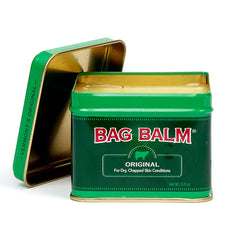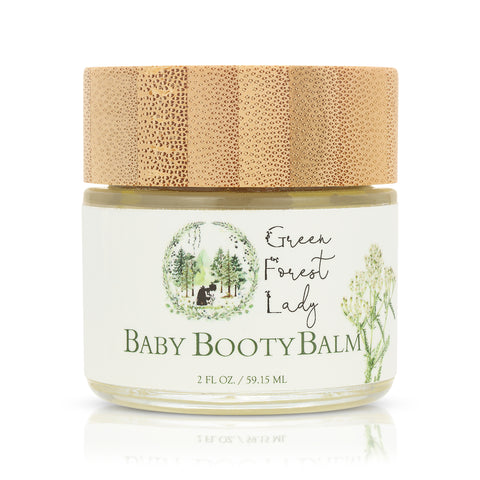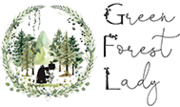Why Bag Balm should not be used on Babies, Diaper Rash, or Breastfeeding Nipples
Bag Balm was originally created over a 100 years ago as an “udder balm” to treat skin issues on cow udders. It has grown in popularity over time, not only with farmers but also with the general population.

What are the uses for Bag Balm? There are many uses for Bag Balm. On one parenting website there were 20 individual uses for Bag Balm.
But the million-dollar question is...
Is Bag Balm safe for babies, diaper rash and breastfeeding nipples?
EatThis, NotThat! published an article in April of 2022 Listing 6 of the Most Dangerous Food Ingredients That Have Been Banned in the U.S. One of those ingredients is 8-Hydroxyquinoline Sulfate.
The Bag Balm Website states Bag Balm ingredients are petrolatum, lanolin, paraffin wax, water, and 8-Hydroxyquinoline Sulfate (0.3%). On their FAQ, Bag Balm specifically states they recommend that you check with your pediatrician before using Bag Balm on diaper rash.
What is 8-Hydroxyquinoline Sulfate?
The American Chemical Society states 8-Hydroxyquinoline sulfate is a metal chelating agent extracted from coal tar. It has been used in a wide variety of products, from “bag balm” for cows to cosmetics and drugs, for its ability to inhibit the growth of imidazolidinylurea microbes.
The National Institutes of Health has determined Bag Balm is toxic if swallowed.
Hazards information at the National Institutes of Health gives the 8-Hydroxyquinoline Sulfate compound a
- Danger rating that it is toxic if swallowed,
- Warning rating that it may cause an allergic skin reaction,
- Danger rating that it can cause serious eye damage,
- Danger warning that it may damage an unborn child.
Does using Bag Balm on breastfeeding nipples where the child will ingest the compound multiple times a day for months sound safe? Using any compound on a baby's skin that could accidentally get in their eyes or in their mouths does not seem like the best solution.
Are there any other ingredients in Bag Balm that are a concern for breastfeeding mothers or for use on diaper rash?
YES! - Lanolin . . .
Although Lanolin is well known and most parents believe it is safe, according to dermreview an allergic reaction can be caused when lanolin enters the bloodstream, and the incidence of lanolin allergies is increasing. Mount Sinai states lanolin is a poisonous ingredient and can be harmful if swallowed.
The biggest concern with lanolin and 8-hydroxyquinoline sulfate is the extended ongoing daily exposure of the baby when it is used on breastfeeding nipples and the frequent exposure when it is used to treat, or prevent, diaper rash.
Are there better alternatives?
Yes!
The best alternative for diaper rashes is not getting them in the first place!
Keeping booty’s clean and dry is always the first line of defense for diaper rashes.
When faced with a diaper rash, or when trying to prevent diaper rashes, and avoid lanolin and 8-Hydroxyquinoline sulfate, the organic ingredients in the Green Forest Lady’s Baby Booty Balm may be what you are looking for - Olive Oil, Coconut Oil, Beeswax, Chickweed, Shea Butter, Calendula Flowers, Nettle Leaf, Yarrow Flowers, Arrowroot Powder, Raspberry Seed Oil, Vitamin E, Calendula Extract, Myrrh Oil, and Lavender Oil.

What is a safe alternative to use on sore, cracked, breastfeeding nipples?
Air drying nipples after each feeding can help prevent problems. Letting some milk dry on the nipples can also be helpful. Do not use a hair dryer or try to artificially help the nipples dry faster. Rubbing them with a towel or using a hair dryer can make the problem worse.
A lanolin and 8-Hydroxyquinoline sulfate free Nipple Balm can help. The Green Forest Lady Nipple Balm is made with organic Olive Oil, Cocoa Seed Butter, Calendula Flowers, Marshmallow Root, and Beeswax.

Parents are on a mission to keep their children safe. Sometimes, the most basic of items, like skin ointments, can have dangerous ingredients hiding within them. Perhaps the old saying is true... if you wouldn’t eat it, don’t put it on your skin.
For a safe alternative to Bag Balm see here.

